- Home
- Trapping Beavers
- Beaver Trapping Techniques
Beaver Trapping Techniques
This post may contain affiliate links so I earn a commission.
Using the right beaver trapping techniques will significantly increase your success rate.
Whether you're trapping beaver for their fur or because they're a nuisance animal on your property, a properly scouted area and good set location will make a huge difference.
Beavers are actually a pretty easy animal to trap.
Beaver trapping is a lot like trapping muskrats, just on a larger scale.
The sets used are both very similar and they often live in the same environments.
Since beavers build obvious dams and construct lodges from sticks and debris, locating an area that's inhabited by a beaver is usually an easy task.
Chewed or felled trees, large or even huge lodges constructed from branches, sticks and mud often defy what a rodent should be capable of.
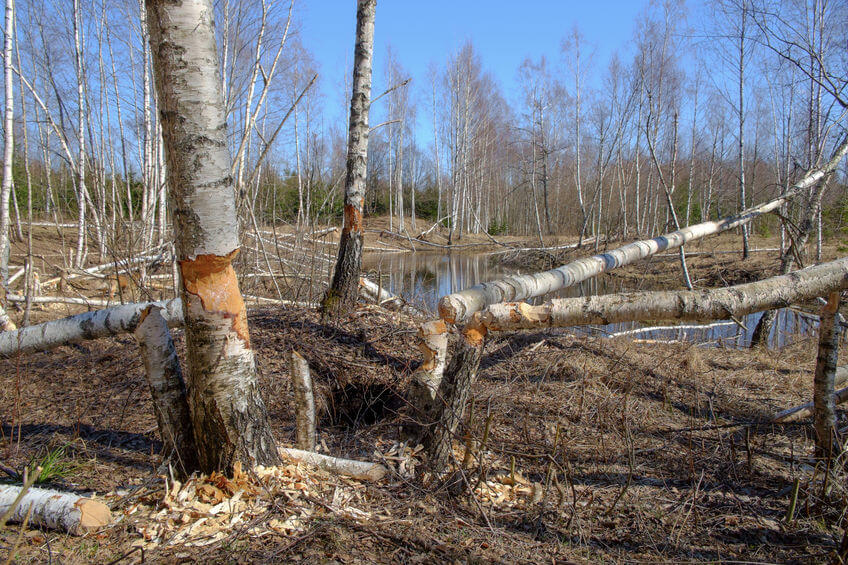
Spotting a beaver pond is easy when you look for these obvious structures, but you can't just throw a few traps around the bank and expect to be successful.
Although beavers are not trap shy, trapping one does require a properly set trap at the right location.
Finding the right location begins with scouting.
Take the time to look for fresh beaver sign, runways, scent mounds and other indications showing beaver have recently been in the area.
One of the biggest mistakes young trappers can make is setting a trap on old sign that's not fresh.
Once you identify fresh activity, try using one of the sets outlined below.
Set Locations - Beaver Trapping Techniques
Here are a few beaver trapping techniques that work really well:
Lodge Set
One of the easiest places to trap a beaver is at their lodge.
Since these large structures are easy to spot and used frequently, placing a 330 conibear trap near the entrance is a great set location.
Make sure to check your local laws since some states require you to stay a minimum distance from an animals dwelling.
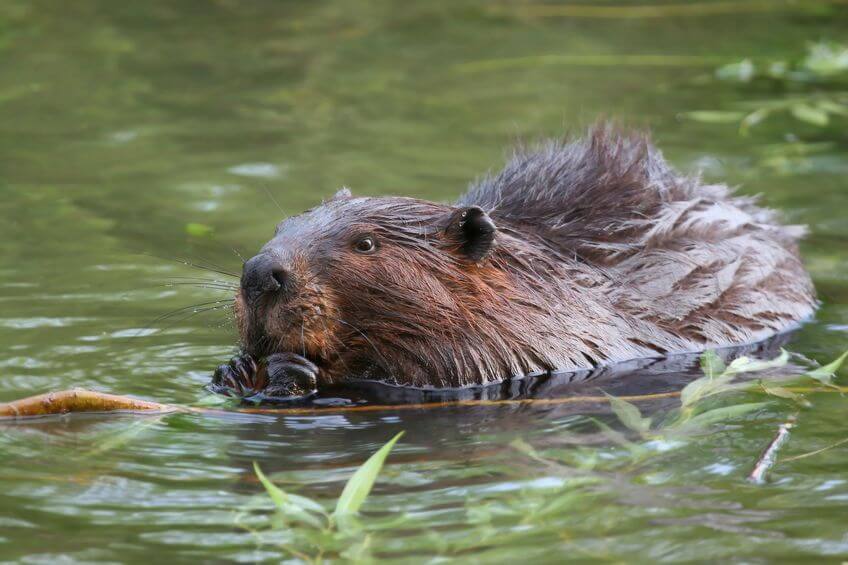
Once you locate the lodge, the next step is to find the opening and runway the beaver are using as they enter and exit the lodge.
If the water is shallow, you can find the entrance by sticking your foot around the base of the lodge until you find the entrance that runs up underneath.
Most lodges will have 2 entrance/exit locations while some that are built into the bank may only have one.
Use caution when walking near a beaver lodge.
The runs created by the beaver can be deep and roughly 16 inches wide.
Stepping directly into one may cause you to go under water and fill up your waders.
Duck hunters often have this problem when pushing or "puddle jumping" beaver ponds.
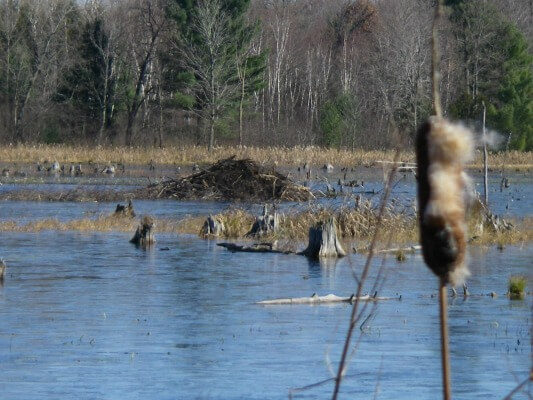
If you're trapping in the winter and there is ice on the lake, you also need to be extremely careful when walking around a beaver lodge.
The ice can be much thinner in an area that's used frequently by beaver.
I personally know a person who fell through the ice when he stepped on a thin spot created by the beaver while trying to set a trap.
Once you locate the entrance, use an H stand or 2 long dead sticks placed through the spring holes of the 330 conibear to secure the trap at the entrance.
Place a few guide sticks near the trap to funnel the beaver through and prevent them from swimming around the trap.
Tie the trap off to something solid using a strong wire or cable and you're done!
Runway Set - Beaver Trapping Techniques
The runway set is another great beaver trapping technique. The first beaver I ever trapped was caught in this set.
To construct a runway set, look for an area in shallow water where the bottom has a narrow trough that's clear of debris from the beaver swimming back and forth.
A narrow stream that runs from one pond to another is a perfect location to make this set.
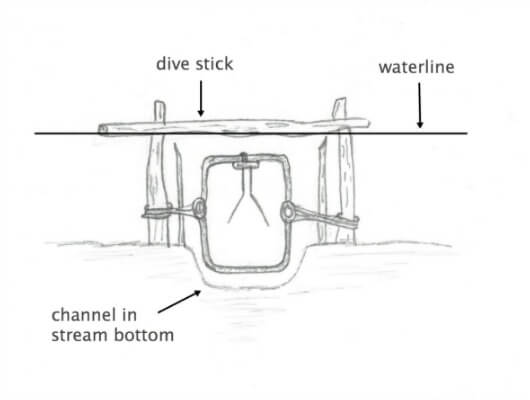
Set the 330 conibear in the trough and use large dead sticks to securely fasten the trap.
The trap should be solid so the beaver can't bump it out of the way.
If the water is deeper than the top of the trap, place a dive stick near the waterline.
This will force the beaver to dive under the stick and through the opening of your trap.
This set is simple to create because it's typically in shallow water and easy to access, plus it works!
Beaver Dam Set
Setting a trap at a beaver dam is another great spot because beavers will cross over the dam to go from one body of water to the other.
Locate the muddy trail crossing that leads from one side of the dam to the other.
Since beavers are a creature of habit, they will continually travel across this path.
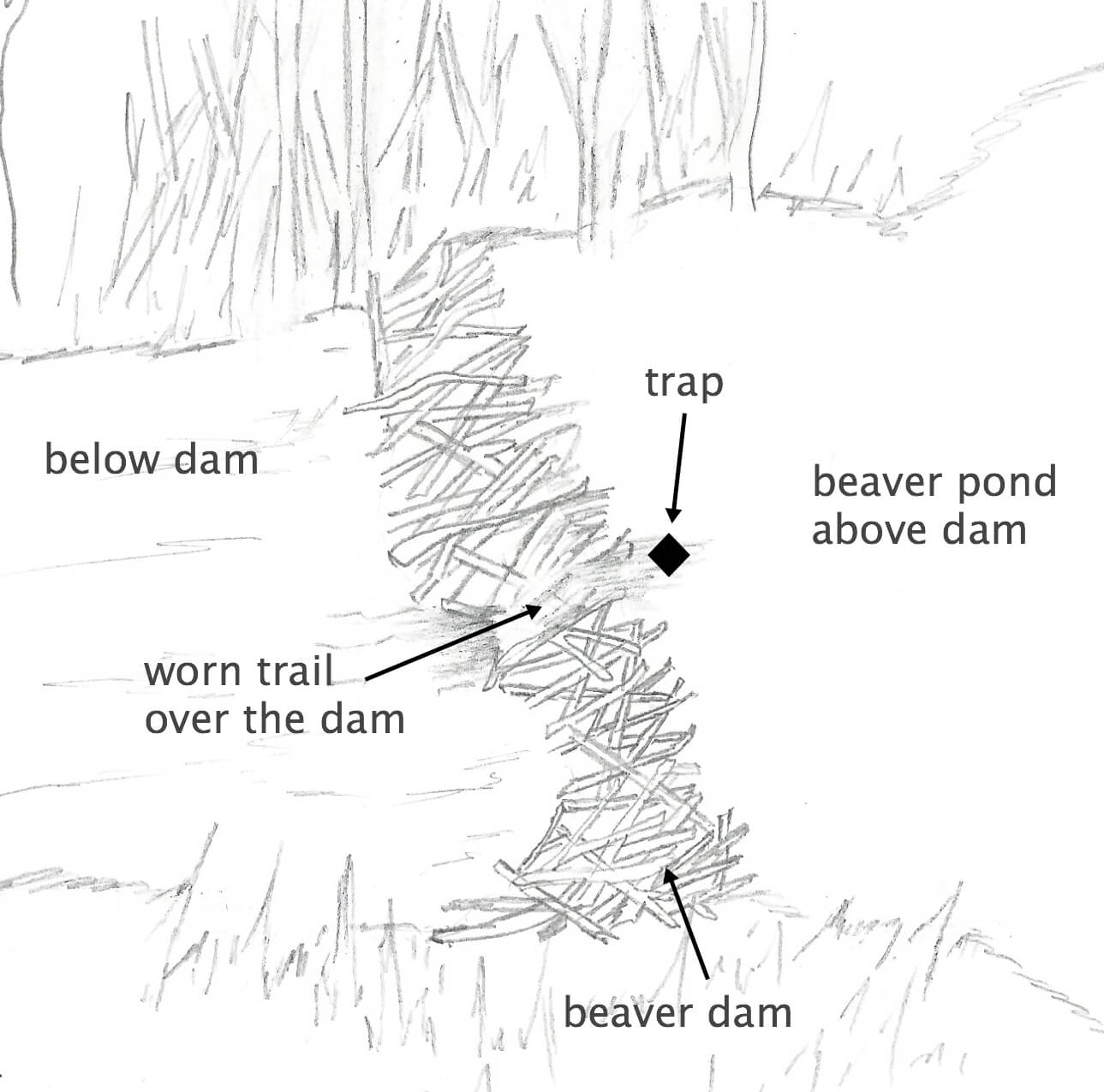
You have a couple of different options when trapping a beaver dam.
First, you can choose to set a foothold on either side of the crossing.
Generally, the pond side of the crossing is a great place to set a foothold.
Remember, when using a foothold to trap beaver you should use a drowning wire or drowning rod that is secured at one end in deeper water.
Another option is to set a 330 conibear on top of the dam in the middle of the crossing.
Check your local laws before attempting this set since some states don't allow large body grip traps to be set above water.
I generally don't like to use a 330 set above the water.
These large traps are unforgiving if you have an accidental catch of a non-targeted species which is why most states don't allow this type of set.
Overall - Beaver Trapping Techniques
These are just a few beaver trapping techniques that work really well.
Are these the only sets you can use for beaver.....nope!
There's a lot of other options you can use, but these are easy to construct and they work really well.
Whether you're trapping beaver because they're a nuisance on your property or you're simply doing some fall or winter trapping, try using a few of these sets.
I think you will like them a lot!



